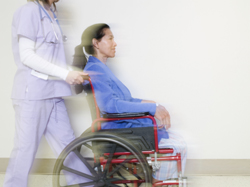Tele-rehabilitation for spinal cord injured patients
Life for patients who have suffered spinal cord injuries can be very difficult. The individual needs to relearn how to be autonomous, and in many cases, this is dependent on the treatment and support they receive. Medical treatment for these types of injuries requires collaboration from many specialists including neurologists, orthopaedic experts and urologists. Specialised spinal units do exist in many places in Europe and they do deliver a high standard of care. However, this type of extensive care is only limited to the first months after injury. For after-care to be effective, it needs to be extensive, which is costly and out of the reach of many care systems' budgets. The THRIVE project, which is supported by the EU, used information and communication technology (ICT) to improve the level of care provided to spinal cord injured patients. The use of this technology allows them to return to their family settings without compromising the quality of the treatment that they receive. This approach to rehabilitation, described as tele-rehabilitation, was evaluated in experiments done in public care systems in three European countries, Belgium, Italy and the UK. The project designers created a tele-rehabilitation protocol in which all aspects of medical care were integrated. Effective detection of medical complications was therefore enabled over time to ensure therapeutic action when needed. The effectiveness of the protocol was tested by comparing a selection of predefined medical outcomes in patients who received tele-rehabilitation and those who received only standard home care. The protocol was validated and adapted following feedback from medical specialists, patients and carers. The THRIVE project demonstrated the importance and success of tele-rehabilitation when applied to spinal cord injured patients and that it is suitable for use by interested health institutions.







